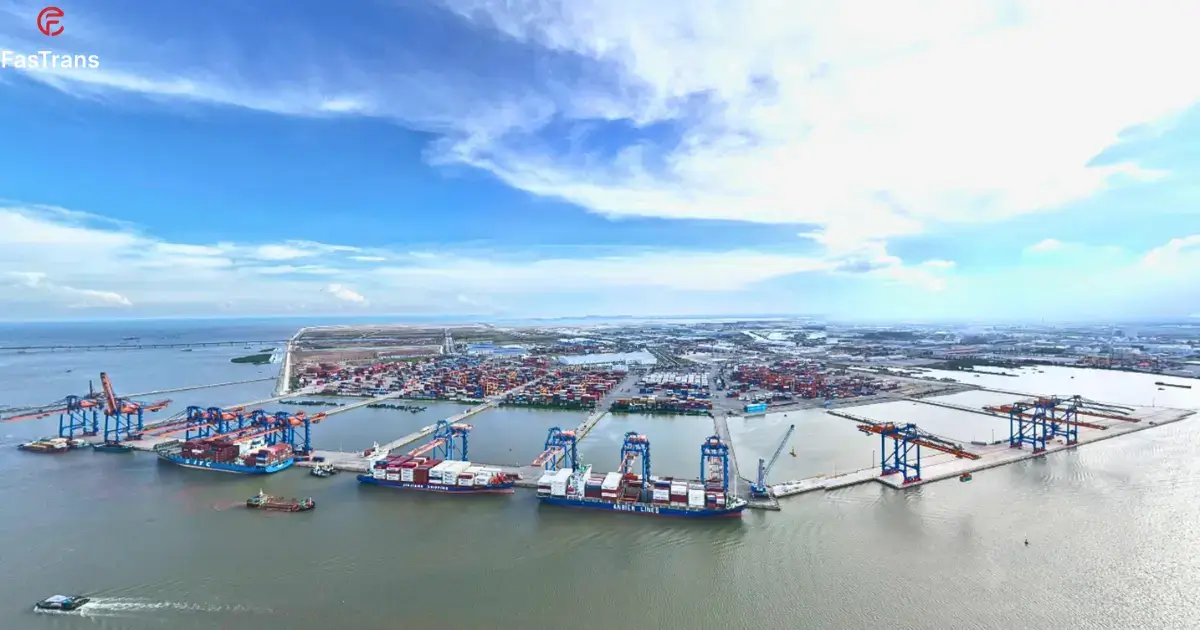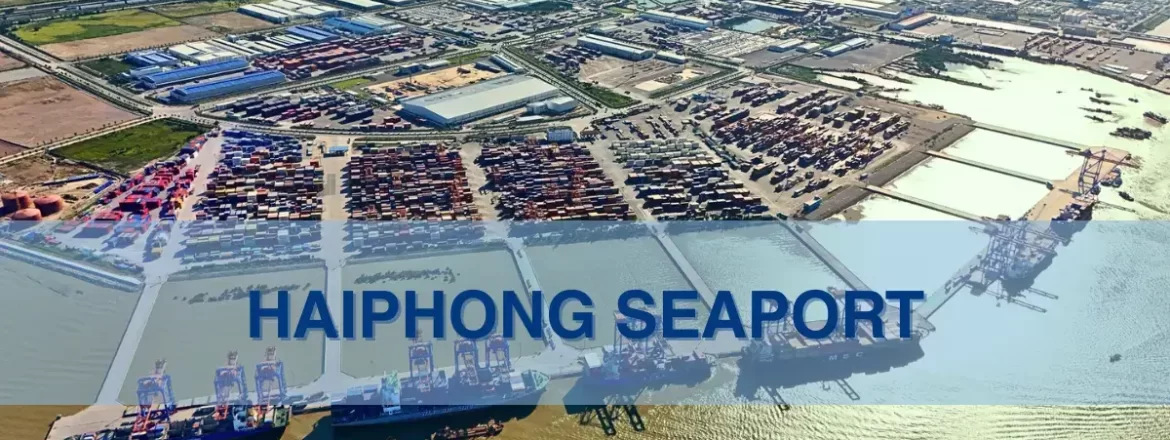Hai Phong Port: Unlocking the Manufacturing & Trade Potential of Northern Vietnam
Vietnam’s remarkable economic growth and swift integration into the global supply chain have made it a manufacturing powerhouse in Southeast Asia. This spectacular expansion-driven by significant Foreign Direct Investment (FDI) and robust international trade-demands a world-class logistics infrastructure. At the very heart of this Northern economic miracle stands Hai Phong Port, the indisputable Strategic Trade Gateway of Northern Vietnam.
For international shippers, carriers, and logistics professionals, understanding the capability and connectivity of Hai Phong is not optional-it is essential for optimizing the Vietnam Supply Chain. The city of Hai Phong, situated on the crucial coastal corridor, acts as the primary maritime connection for Vietnam’s capital, Hanoi, and the vast manufacturing triangle that spans provinces like Bac Ninh, Hai Duong, Hanoi capital and Hung Yen. With a total cargo throughput reaching approximately 7.1 million TEUs annually, Hai Phong has affirmed its position as one of the world’s top 30 busiest container ports, directly powering the region’s dynamic import and export activities.

General Overview of Hai Phong Port
Geographical Location: Vietnam’s Northern Anchor
Hai Phong Port’s strategic advantage lies in its geography. Located approximately 120 km east of Hanoi capital, the port complex sits at the estuary of the Red River Delta, offering direct access to the Gulf of Tonkin. This strategic position ensures that goods flow seamlessly between global shipping routes and the intensive manufacturing and consumption centers of Northern Vietnam.
The port cluster is divided into several areas, historically centered on the inner city (like Hoang Dieu, which is being phased out) and, more critically today, the new outer deep-water zones.
Technical Specifications: Embracing Deepwater Capacity
The operational capability of Hai Phong has been revolutionized by the Lach Huyen International Gateway Port (also known as the Hai Phong International Container Terminal – HICT). This development has shifted the port’s technical profile from a purely regional hub to a key international player capable of handling mainline vessels.
In addition, the complex includes modern facilities like HICT, Nam Dinh Vu Port, and VIP Green Port, all equipped with modern Ship-to-Shore (STS) cranes and advanced handling equipment.
Annual volume and Contribution
Hai Phong is a logistics powerhouse. Recent figures indicate that the Hai Phong port cluster handles cargo throughput exceeding 7 million TEUs annually. This volume underscores its crucial role in Vietnam’s trade balance, facilitating the export of high-value goods like electronics, textiles, machinery, and furniture, while supporting the influx of raw materials and capital equipment necessary for the country’s manufacturing sector.
Hai Phong’s Road, Rail, and Water Links
Road Connectivity: The Expressway Backbone
The opening of the Hanoi-Hai Phong Expressway (CT04) has fundamentally changed Northern Vietnam’s logistics landscape. This 105-kilometer expressway drastically cuts transit time between the port terminals and Hanoi from several hours to just over one hour, providing fast, reliable access to industrial parks and distribution centers in the capital region, Bac Ninh, and Hung Yen.
Rail Connectivity: Linking to the Interior
The rail network provides a cost-effective, high-volume alternative for long-haul and inland cargo. Hai Phong Port is connected to the national rail system, which extends towards Hanoi and, crucially, links to the border crossing points with China (e.g., Lao Cai and Lang Son), supporting burgeoning cross-border trade and multi-modal logistics solutions.
Inland Waterway and Coastal Connectivity
This unique aspect of Hai Phong’s logistics system is often overlooked. The Red River Delta offers an extensive network of inland waterways, allowing barges to transport cargo between the port and various inland container depots (ICDs) and shallow-water terminals.
Furthermore, domestic sea routes connect Hai Phong with the major Southern ports, primarily Cat Lai Port (Ho Chi Minh City), as well as Central Vietnam ports like Da Nang and Quy Nhon. This allows international logistics companies to utilize Vietnam’s coast for efficient North-South cargo repositioning, balancing trade flows, and serving nationwide distribution networks.
Exploitation Costs (Local Charges) at Hai Phong Port
Local Charges for Export Goods
| Item | Surcharge Description | Currency | 20’GP | 40’GP/HC | Per Bill |
| 1 | Terminal Handling Charge | USD | 135 | 200 | – |
| 2 | Bill Of Lading Fee (B/L Fee) | USD | – | 45 | |
| 3 | Telex Release Fee (B/L Surrender Fee) | USD | – | 40 | |
| 4 | B/L Amendment Fee | USD | – | 40 | |
| 5 | Seal Fee (per unit) | USD | 10 | – | |
| 6 | Admin Charge (per B/L set) | USD | – | 35 | |
| 7 | Change Of Destination After Loading | USD | – | 500 | |
| 8 | Dangerous Goods | USD | 10,000 | – | |
| Mis-declaration Fee | |||||
| 9 | Container Damage Caused by Dangerous Goods | USD | 2,000 | – | |
Local Charges for Import Goods
| Item | Surcharge Description | Currency | 20’GP | 40’GP/HC | Per Bill |
| 1 | Terminal Handling Charge | USD | 135 | 200 | – |
| 2 | Delivery Order Fee (D/O Fee) | USD | – | 45 | |
| 3 | Container Imbalance Charge (CIC) | USD | 120 | 240 | – |
| 4 | Cleaning Charge | USD | 10 | 15 | – |
| 5 | Equipment Management Charge | USD | 15 | 20 | – |
Future Development Potential: Becoming a Regional Hub
The future of Hai Phong Port is defined by aggressive expansion and modernization, aiming to solidify its status as a leading maritime and logistics hub in Southeast Asia.
✨Phase II Expansion of Lach Huyen: The Vietnamese government has approved investment for additional berths (Berths No. 7-12), including plans for berths 9-12 to handle the world’s largest container vessels. By 2030, the entire Lach Huyen area is planned to feature 14-16 berths, significantly increasing its deep-sea capacity and competitive advantage.
✨Integrated Logistics Ecosystem: Hai Phong is strategically shifting its focus toward a fully integrated “port–industrial park–urban” logistics model. The Dinh Vu – Cat Hai Economic Zone is being closely linked to the port, helping to optimize the supply chain, reduce inland transportation costs, and minimize delivery times.
✨Focus on Green and Smart Ports: New terminals are being developed with “Green Port” and “Smart Port” models, incorporating energy-efficient practices and digital technologies to enhance operational efficiency and align with global sustainability standards.
Hai Phong is more than just a port; it is the cornerstone of Northern Vietnam’s industrial future, offering international shippers and logistics partners a robust, expanding, and increasingly efficient gateway to one of the world’s most dynamic manufacturing regions.



